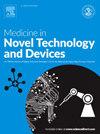Modelling non-convex fractional order differential equation using dual supervision neural network for medical image quality enhancement
Q3 Medicine
引用次数: 0
Abstract
Medical imaging is essential for modern cancer screening and diagnosis, but image quality is usually compromised in an attempt to lower patient risk. Traditional computer-aided diagnosis (CAD) systems that employ anomaly detection techniques have increased diagnostic accuracy by assisting radiologists in interpreting medical images. However, existing problems like inconsistent pixel values, computational inefficiencies, and limited generalizability hinder the successful application of AI-based models in real-time clinical settings. Due to distinct pixel intensity variation, medical images necessitate specific transformation; however, model development is complicated by the lack of standard parameter guidelines. Current models' high memory and processing requirements restrict their applicability in settings with limited resources, especially in rural areas. The need for a solution that ensures both diagnostic accuracy and computational efficiency is further highlighted by the fact that noise and artifacts in low-resolution images make it more difficult to diagnose diseases accurately. This study presents a method to improving the quality of medical images by using a non-convex fractional differential equation (NC-FODE). Pixel strength is efficiently calculated by NC-FODE to increase intensity and improve diagnostic relevance. To ensure precise and adaptable parameter setting for different image modalities, a dual supervised neural network (DSNN) is utilized to approximate partial derivatives and set upper bounds for model parameters. Using publicly available radiography datasets, it has been demonstrated that the proposed method greatly enhances image quality across a range of imaging modalities without requiring extensive pre-processing. Real-time processing appropriate for hectic clinical settings is made possible by experimental results showing improved pixel density, decreased noise, and superior computational efficiency. It can be customized for variety of clinical applications since it ensures consistency and reproducibility across different imaging datasets.
基于对偶监督神经网络的非凸分数阶微分方程建模用于医学图像质量增强
医学成像对现代癌症筛查和诊断至关重要,但为了降低患者的风险,图像质量通常会受到损害。采用异常检测技术的传统计算机辅助诊断(CAD)系统通过协助放射科医生解释医学图像来提高诊断准确性。然而,目前存在的像素值不一致、计算效率低下、泛化能力有限等问题阻碍了人工智能模型在实时临床环境中的成功应用。医学图像由于像素强度变化明显,需要进行特定的变换;然而,由于缺乏标准参数指导,模型开发变得复杂。当前模型的高内存和处理要求限制了它们在资源有限的环境下的适用性,特别是在农村地区。低分辨率图像中的噪声和伪影使准确诊断疾病变得更加困难,这进一步凸显了对确保诊断准确性和计算效率的解决方案的需求。提出了一种利用非凸分数阶微分方程(NC-FODE)提高医学图像质量的方法。NC-FODE有效地计算像素强度,以增加强度和提高诊断相关性。为了保证对不同图像模态的精确和适应性参数设置,利用双监督神经网络(dual supervised neural network, DSNN)逼近偏导数并设置模型参数的上界。使用公开可用的放射照相数据集,已经证明该方法大大提高了一系列成像模式的图像质量,而不需要大量的预处理。实时处理适合忙乱的临床设置是可能的实验结果显示提高像素密度,降低噪声,和优越的计算效率。它可以为各种临床应用定制,因为它确保了不同成像数据集的一致性和可重复性。
本文章由计算机程序翻译,如有差异,请以英文原文为准。
求助全文
约1分钟内获得全文
求助全文
来源期刊

Medicine in Novel Technology and Devices
Medicine-Medicine (miscellaneous)
CiteScore
3.00
自引率
0.00%
发文量
74
审稿时长
64 days
 求助内容:
求助内容: 应助结果提醒方式:
应助结果提醒方式:


